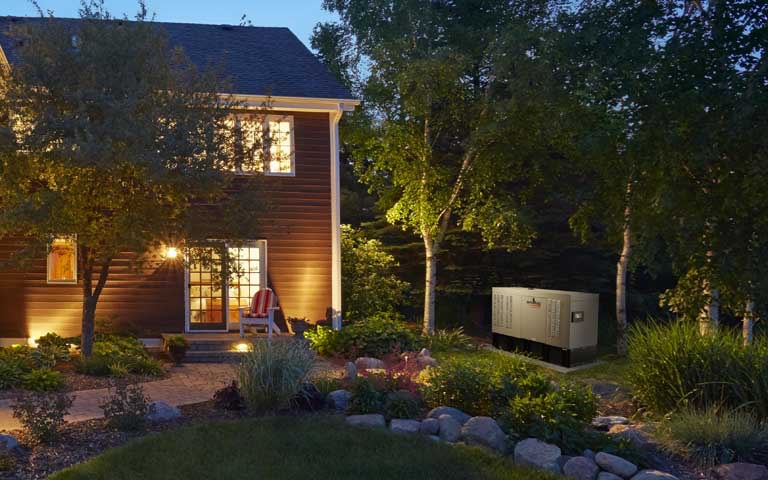
Electricity is the silent lifeline of every modern home and business. From illuminating rooms to powering devices, electrical systems keep life moving seamlessly. But as technology evolves, so do our electrical needs. Outdated wiring, limited outlets, and inefficient systems can’t support the increasing demand of modern appliances and smart devices.
That’s where electric remodeling services come in. Whether you’re upgrading a historic home, renovating a commercial space, or integrating cutting-edge smart technology, professional electric remodeling modernizes your property, enhances safety, and boosts energy efficiency. In this guide, we’ll delve into the key aspects of electric remodeling, common upgrades, and the transformative benefits it brings to your home or business.
Why Electric Remodeling Matters More Than Ever
Electrical systems installed decades ago weren’t designed for today’s technology-driven world. With the surge in smart devices, high-powered appliances, and energy-efficient lighting, outdated systems struggle to keep up.
The Risks of Outdated Electrical Systems:
- Fire Hazards: Aging wires with degraded insulation can spark and ignite.
- Insufficient Power: Modern appliances overload older circuits.
- Frequent Outages: Inadequate systems cause tripped breakers and power surges.
- Code Violations: Older wiring may fail to meet modern safety standards.
- Inefficiency: Outdated lighting and wiring lead to higher energy bills.
Fact:
According to the U.S. Fire Administration, electrical malfunctions cause over 25,000 residential fires annually—many due to outdated wiring.
Key Components of Electric Remodeling
Electric remodeling isn’t just about replacing old wires; it involves strategic upgrades that align with current needs and future growth. Let’s break down the essential components.
1. Wiring Replacement
Purpose: Replace outdated or damaged wiring with modern, code-compliant materials.
Key Upgrades:
- Knob-and-Tube Replacement: Phased out decades ago, these wires pose fire risks.
- Aluminum Wiring Replacement: Aluminum wires expand and contract, loosening connections.
- Grounded Wiring Installation: Essential for modern appliances and electronics.
Pro Tip:
Copper wiring is the gold standard for longevity and conductivity.
2. Lighting System Overhaul
Purpose: Upgrade lighting for energy efficiency, aesthetics, and functionality.
Popular Lighting Upgrades:
- LED Lighting: Consumes 75% less energy than incandescent bulbs.
- Smart Lighting Systems: Control lights remotely via apps or voice assistants.
- Accent and Task Lighting: Improve ambiance and productivity.
Insight:
Switching to LED lighting can reduce household energy consumption by 10–15%.
3. Electrical Panel Upgrade
Purpose: Ensure the panel can handle increased electrical loads.
Signs You Need an Upgrade:
- Frequent circuit breaker trips.
- Appliances not running at full power.
- Panel over 20 years old.
Solution:
Install a modern 200-amp panel with circuit breakers and surge protection.
4. Smart Home Integration
Purpose: Automate and enhance home functionality with intelligent systems.
Smart Features:
- Lighting Control: Adjust lighting from anywhere.
- Thermostat Automation: Optimize heating and cooling based on usage patterns.
- Security Systems: Remote monitoring of cameras and alarms.
Fun Fact:
Homes with smart systems sell 5–10% faster than comparable properties without them.
5. Commercial Electrical Remodeling
Businesses have unique electrical needs, from server rooms to specialized equipment.
Key Commercial Upgrades:
- Dedicated Circuits for Equipment: Prevents power disruptions.
- Energy-Efficient Lighting: Reduces operational costs.
- Data and Communication Wiring: Supports modern office technology.
Pro Insight:
LED retrofitting in commercial buildings cuts lighting energy costs by up to 60%.
The Electric Remodeling Process: Step-by-Step
Electric remodeling requires meticulous planning and execution to ensure safety, efficiency, and minimal disruption. Here’s an overview of the process:
1. Initial Consultation and Assessment
- Evaluate current system performance.
- Identify pain points like outdated wiring or insufficient outlets.
- Discuss goals, including smart technology integration or energy efficiency improvements.
2. Design and Planning
- Develop a layout based on electrical load calculations.
- Select materials and components, such as wiring gauges and panel sizes.
- Ensure compliance with local codes and the NEC.
3. System Upgrades and Installation
- Remove outdated wiring and equipment.
- Install new circuits, panels, lighting, and outlets.
- Integrate smart devices and automation systems.
4. Testing and Inspection
- Perform load tests to verify system reliability.
- Inspect connections, breakers, and GFCI devices.
- Schedule an official code inspection if required.
5. Final Walkthrough and Education
- Demonstrate new features like smart controls.
- Provide tips for maintaining energy efficiency.
- Deliver documentation, including wiring diagrams for future reference.
Tip:
Ask for surge protection installation during the remodeling process to safeguard sensitive electronics.
Energy Efficiency: A Core Benefit of Electric Remodeling
Electric remodeling doesn’t just modernize a property—it significantly reduces energy consumption. New wiring, LED lighting, and energy-efficient appliances collectively lower utility bills.
Energy-Saving Upgrades:
- LED Lighting Systems:
- Last 25 times longer than incandescent bulbs.
- Reduce heat output, easing HVAC system workload.
- Smart Thermostats:
- Adjust temperature based on occupancy patterns.
- Reduce HVAC energy use by up to 10%.
- Energy-Efficient Outlets and Switches:
- Automatically cut power to unused devices.
- Reduce “phantom” energy consumption.
Did You Know?
Phantom energy—power consumed by devices in standby mode—accounts for up to 10% of residential electricity usage.
Common Electrical Problems That Prompt Remodeling
Electrical remodeling isn’t always about aesthetics or convenience. Sometimes, safety issues necessitate immediate action.
Signs Your Electrical System Needs Remodeling:
- Frequent Breaker Trips: Indicates overloaded circuits or damaged wiring.
- Flickering Lights: Often caused by deteriorating connections.
- Burning Smell or Discolored Outlets: Sign of overheating wires.
- Insufficient Outlets: Extension cords aren’t a long-term solution.
- No Grounded Outlets: Older homes often lack ground wires, increasing shock risk.
Safety Reminder:
Never ignore outlets that spark or feel warm to the touch. Immediate inspection is crucial.
Modern Trends in Electric Remodeling
The electrical industry continues to innovate, introducing features that blend functionality, safety, and convenience.
Emerging Trends:
- Wireless Smart Controls:
Control lighting, appliances, and security systems without traditional wiring. - Energy Monitoring Systems:
Track real-time energy usage via smartphone apps. - Solar Power Integration:
Pair electrical systems with solar panels and battery storage. - USB-C Outlets:
Meet modern charging needs with built-in USB-C ports. - Voice-Activated Systems:
Integrate with platforms like Alexa or Google Assistant for hands-free control.
Fun Fact:
By 2030, experts predict that 63% of homes will feature integrated smart lighting systems.
The Risks of DIY Electric Remodeling
Electrical work requires expertise, precision, and adherence to safety codes. DIY attempts often result in substandard workmanship, safety hazards, or code violations.
Why You Should Hire Professionals:
- Shock and Fire Hazards:
Incorrect wiring poses life-threatening risks. - Code Compliance Issues:
Non-compliant work may fail inspections and void insurance policies. - Equipment Damage:
Inaccurate wiring can damage appliances and sensitive electronics.
Fact:
DIY electrical projects contribute to thousands of residential fires each year, according to the National Fire Protection Association (NFPA).
How Electric Remodeling Improves Property Value
Electric remodeling adds tangible and perceived value to residential and commercial properties.
Value-Boosting Upgrades:
- Smart Lighting Systems: Increase home appeal for tech-savvy buyers.
- Energy-Efficient Panels: Attract environmentally conscious buyers.
- Upgraded Wiring and Outlets: Essential for older properties entering the modern market.
Insight:
Homes with updated electrical systems sell faster and at higher prices in competitive markets.
FAQ Section
1. How long does electric remodeling take?
The timeline varies based on project scope. A full-house upgrade typically takes 1–2 weeks.
2. Is electric remodeling disruptive?
Professionals minimize disruptions by scheduling work in phases and using efficient techniques.
3. Does electric remodeling increase property value?
Yes. Modern electrical systems attract buyers and support energy-efficient upgrades.
4. When should I upgrade my electrical panel?
Upgrade if your panel is over 20 years old, lacks available circuits, or frequently trips breakers.
5. Can I upgrade to smart systems during remodeling?
Absolutely. Integrating smart technology during remodeling is cost-efficient and future-proofs your home.
Outdated electrical systems don’t just inconvenience—they compromise safety, efficiency, and property value. Whether you need to support smart devices, reduce energy bills, or simply ensure your wiring meets modern standards, electric remodeling is the answer.
Our team of licensed electricians specializes in comprehensive remodeling services for homes and businesses. From upgrading panels to integrating advanced smart systems, we deliver results that power your space safely and efficiently.







